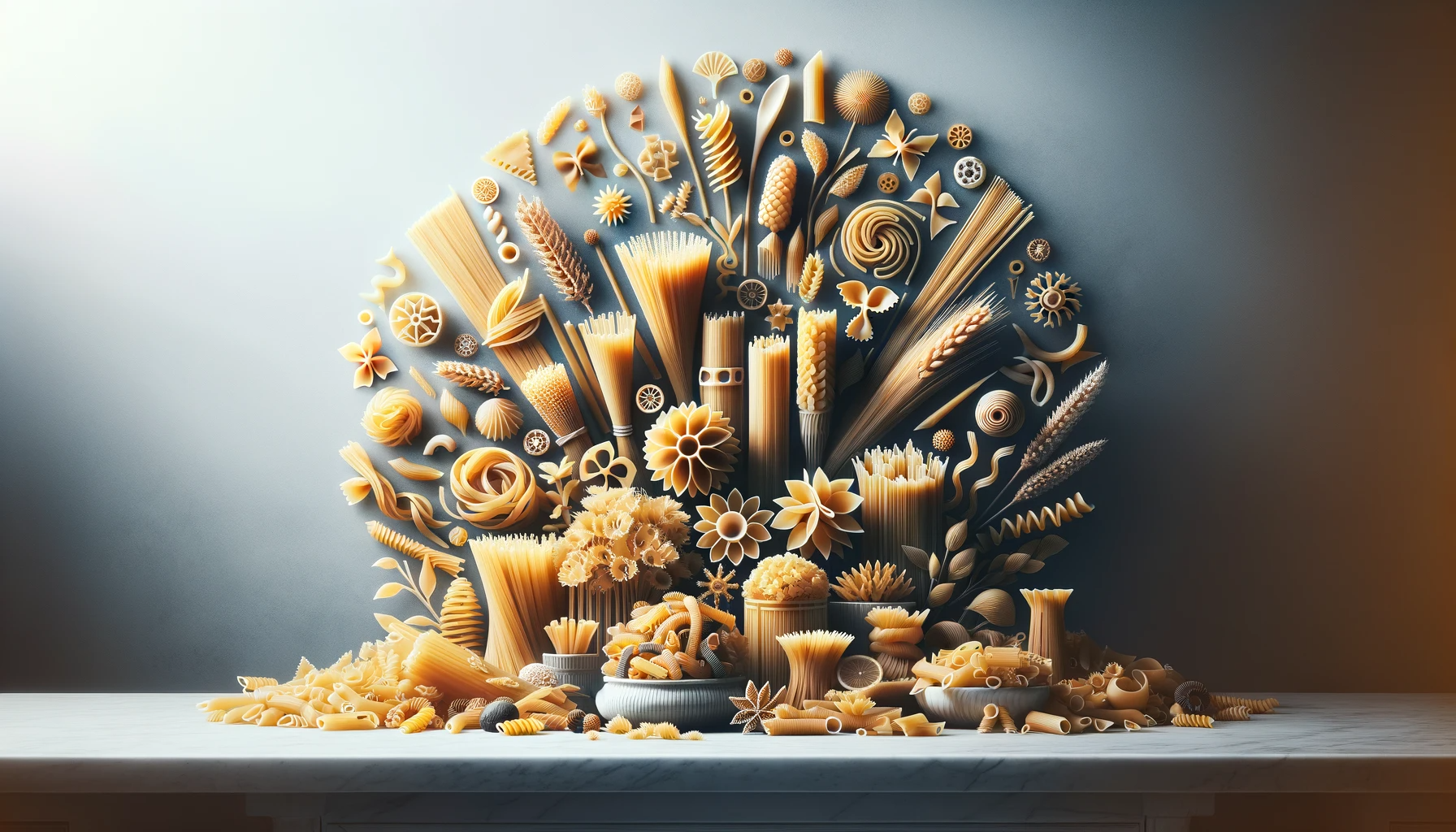Introduction:
Pasta, a beloved staple in many cuisines around the world, comes in countless shapes and sizes, but have you ever wondered what goes into making this delightful dish? It all starts with the essential pasta ingredients. In this comprehensive guide, we’ll delve into the world of pasta ingredients, from the traditional semolina to the healthier whole wheat options. By the end of this article, you’ll have a deeper understanding of what goes into your favorite pasta and how to make informed choices for your next culinary adventure.
Understanding the Foundation: Semolina
- Semolina Flour: Semolina is the foundation of many pasta recipes. It’s a coarse flour made from durum wheat, which is high in protein and gluten content.
- Gluten Strength: The high gluten content in semolina is what gives pasta its elasticity and strength, allowing it to hold its shape and absorb sauces effectively.
- Durum Wheat: Pasta made from semolina is often referred to as “durum wheat pasta” and is the traditional choice for classics like spaghetti, fettuccine, and lasagna.
Exploring Other Flour Options
- All-Purpose Flour: While not as common, all-purpose flour can be used to make pasta. It results in a softer, less chewy texture and is ideal for delicate dishes like ravioli or gnocchi.
- Whole Wheat Flour: For a healthier twist, consider using whole wheat flour. It retains the bran and germ, offering added fiber and nutrients.
- Gluten-Free Alternatives: People with gluten intolerance can still enjoy pasta by using gluten-free flours like rice flour, cornflour, or chickpea flour. These options create a different texture but are equally delicious.
Eggs: The Binding Agent
- Eggs in Pasta Dough: Eggs are often added to pasta dough, acting as a binding agent and contributing to a richer flavor.
- Variety: While traditional pasta recipes use whole eggs, some recipes call for just egg yolks for a silkier texture.
- Eggless Options: Vegans and those with egg allergies can substitute eggs with water or plant-based milk to create pasta dough.
Water: The Universal Solvent
- Hydration: Water is crucial in pasta making to hydrate the flour and create a workable dough.
- Salted Water: Adding salt to the boiling water when cooking pasta enhances the flavor of the pasta itself.
Extra Ingredients for Flavor and Color
- Spinach: For vibrant green pasta, incorporate pureed spinach into the dough.
- Tomato Paste: Tomato paste not only adds a subtle tomato flavor but also a warm orange hue.
- Saffron: Saffron threads can be infused in water and added to pasta dough for a luxurious golden color and unique flavor.
Conclusion: Your Pasta, Your Way
In conclusion, pasta ingredients can vary widely, offering versatility and customization to suit your preferences and dietary needs. From classic semolina flour to alternative options like whole wheat or gluten-free flours, the choice is yours. Eggs, water, and additional ingredients like spinach or saffron can further personalize your pasta-making experience. Armed with this knowledge, you’re ready to embark on a pasta-making journey, crafting dishes that are as unique as you are. So, grab your apron and get ready to roll out the perfect pasta dough for your next culinary masterpiece. Buon appetito!
By understanding the nuances of pasta ingredients, you can elevate your cooking skills and create dishes that are not only delicious but also tailored to your taste and dietary requirements. Experiment, have fun, and savor the satisfaction of crafting homemade pasta from scratch.
